|
|
|
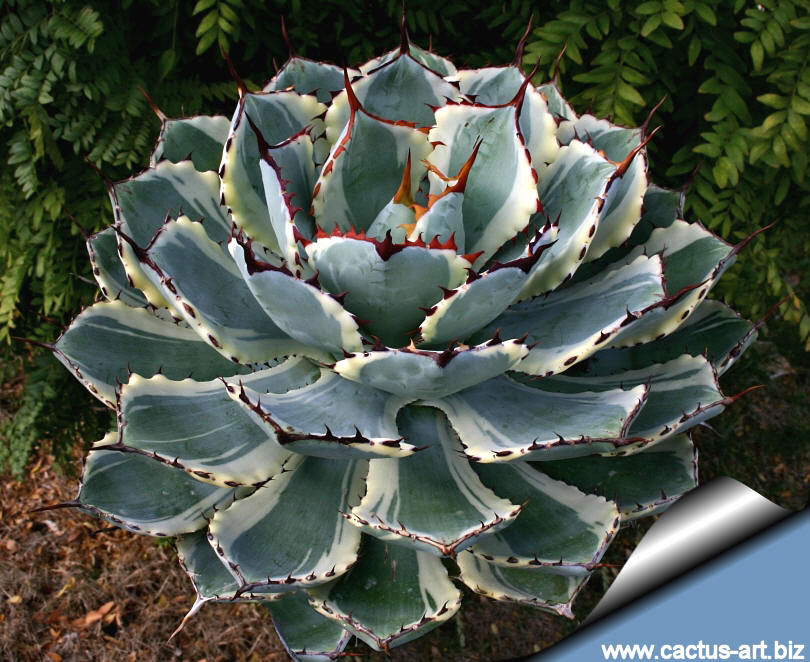
Agave potatorum "Kichijokan" is one of the most
beautiful and highly sought after Japanese cultivars. It can be found under
many different spelling
(rarely seen this name spelled the same way twice)
|
|
Description: Very
attractive small growing rosette forming succulent, usually
solitary and stemless. The bigger it gets the stronger the margination,
spines, colour and global shape. (This cultivar shows
a few different variegated forms and no two plant are exactly identical
one to each other)
Rosette: Open spreading, symmetrical, hemispherical in shape up
to 25 tall by 25 wide
Leaves: Short blue/grey with beautiful wide, up-curving,
spoon-like shaped terminating in a wide upside-down "V". The outermost
sides of the leaves have beautiful lateral, creamy-coluoured variegations
(and occasionally also a pale green coloured variegation along the
centre of each leaf). Nice imprints are present on the back side of the
leaves. The edges are a purplish/maroonish colour. The leaves have large
rusty coloured teeth and a long sharp terminal spine that contrasts well
with the pale leaf colour.
Flowers: May bloom at maturity with a tall spike.
|
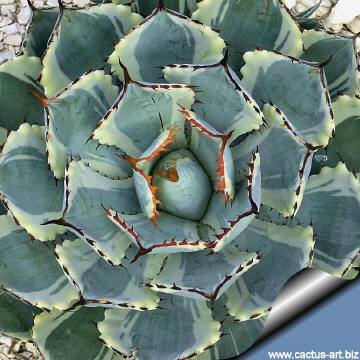
Mature specimen |
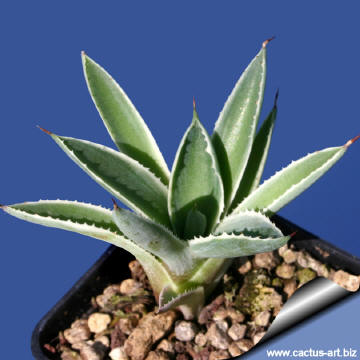
Young specimen |
|
. |
 |
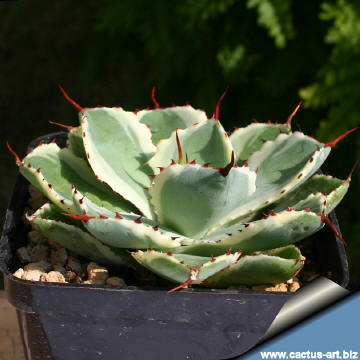 |
|
. |
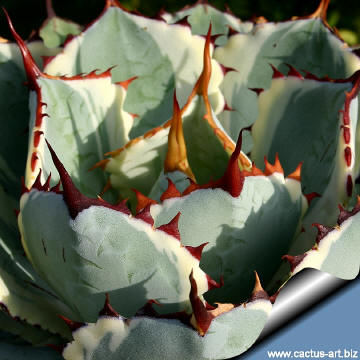 |
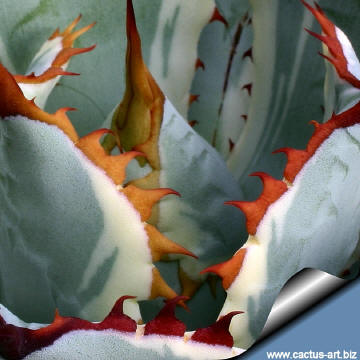 |
|
This Agave is an outstanding container plant because
of its smaller size, beautiful colour and regular proportions The degree
of variegation is highly variable and it is a matter of experimenting
with levels of light, heat or feeding to find the best situation for the
best leaf colour.
Advertising
|
|
|
|
|
|
|
Family: Agavaceae
Scientific Name: Agave potatorum
Zucc. cv. " Kichijokan"
Synonyms:
- Agave potatorum cv. kichiokan marginata
- Agave potatorum cv. kiji-jo-kan
- Agave potatorum cv. kichijojan alba marginata
- Agave potatorum cv. Kisshou-Kan' variegate
- Agave potatorum cv. Kikochan
- Agave potatorum nana variegata
Origin:
Garden origin (Nursery
produced cultivar) This selection is thought to be
a Japanese cultivar of Agave potatorum but some consider it to be a form
of Agave parryi.
|
|
|
|
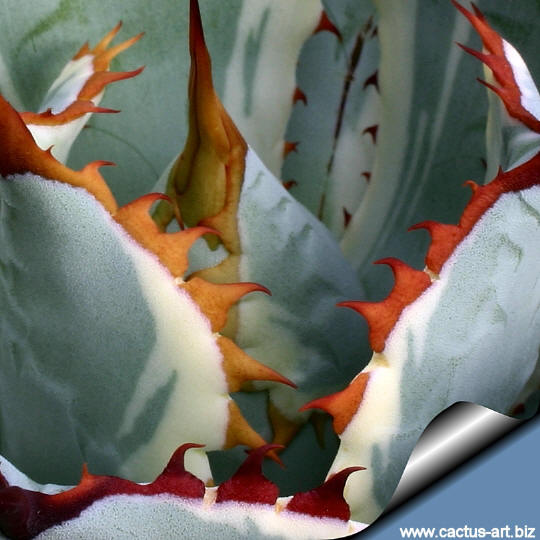
The leaves have large rusty coloured teeth and a long sharp terminal
spine that contrasts well with the pale leaf colour.
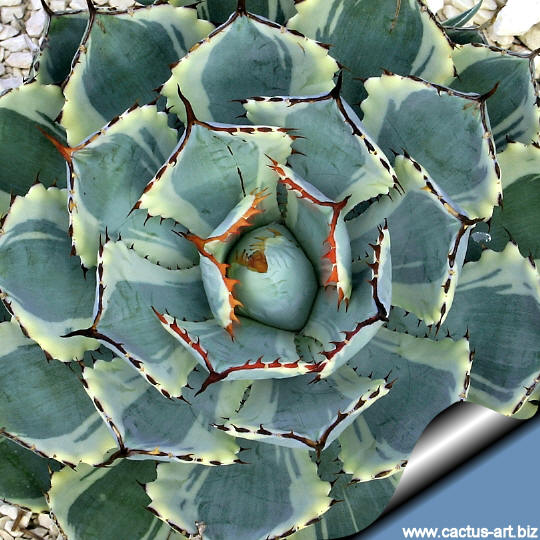
Agave potatorum "kiji-jo-kan" is a very unusual, rare coloured
form with amazing symmetrical lotus like leaf pattern. It is also
known as the “Butterfly Agave” for the shape of the leaves that resemble
butterfly wings. It forms wonderful rosettes that are wider at the
bottom.
Cultivation: Agave potatorum is a
relatively easy-to-grow species, though not as cold-hardy as many of the
more northerly-occurring species (Winter hardy to around -3° C
degrees) But it is best to protect it from
frost to avoid disfiguring the foliage. Suited for
light shade to
full sun, but better with some shade in
summer. It needs a very well-drained
soil. It grows fairly fast in summer if provided with copious water, but
allow to dry thoroughly before watering again (the more water and
fertilizer this plant gets, the faster it will grow). During the winter
months, one should only water enough to keep the leaves from
shrivelling.
It does great in containers or in the ground. Plants cultivated
outdoors are more drought tolerant, and can take some heat and full sun.
Remove eventual suckers to show of the beauty and form of the individual
rosette.
Propagation: By
suckers that are found growing around the base of the plant. The
basal suckers can be removed in spring or summer. Let the cuttings dry
for a few days before inserting into the compost.
Photo of conspecific taxa, varieties, forms and cultivars of
Agave potatorum:

 |
|